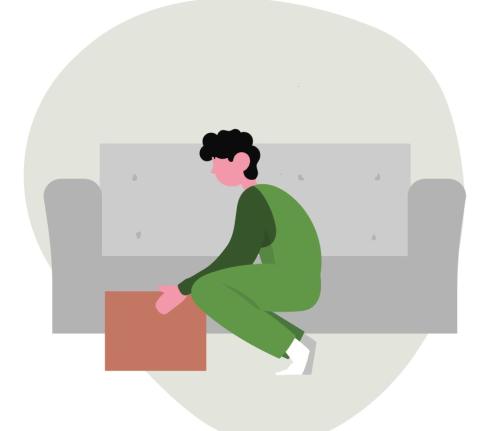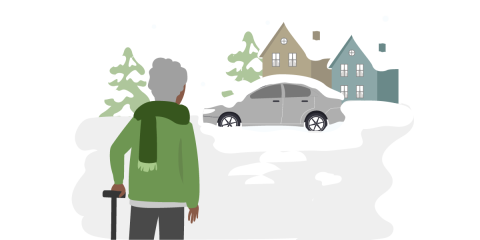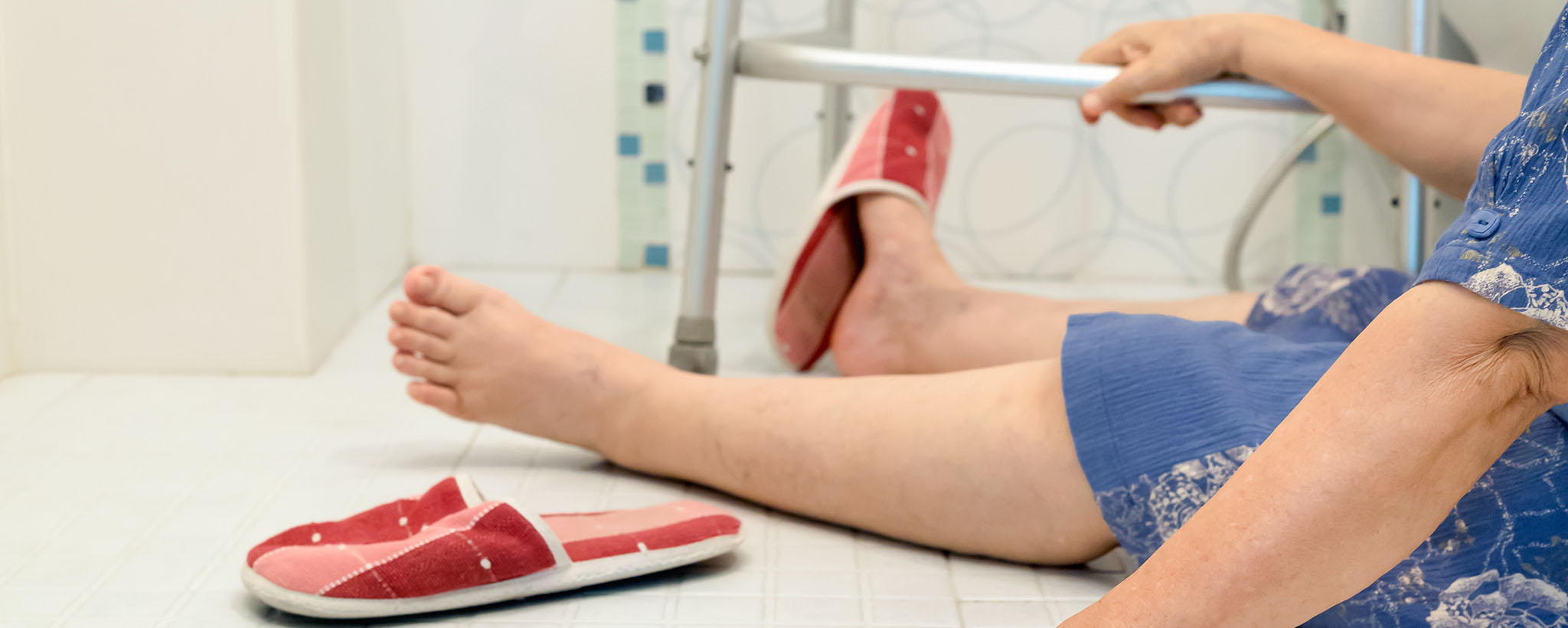Falls are a common cause of injuries at home. The Centers for Disease Control reports that one out of five falls causes a serious injury such as broken bones or a head injury including traumatic brain injuries.
While anyone is at risk for injury from a fall, older adults have a higher risk of death from this common accident. Each year, 3 million older people are treated in emergency departments for fall injuries.
There are many conditions that increase your chance of a fall, including:
- Lower body weakness
- Vitamin deficiencies
- Difficulties with walking and balance
- Use of medicines, such as tranquilizers, sedatives, or antidepressants. Even some over-the-counter medicines can affect balance and how steady you are on your feet.
- Being drunk or impaired by medications
- Vision problems
- Damage to the nerves in your legs or feet from diseases like diabetes, or other medical conditions
- Foot pain or poor footwear
- Home hazards or dangers
You can take some steps to keep yourself and those you love safe:

- Clear the path: Remove boxes, newspapers, electrical cords and phone cords from walkways and stairs. Move coffee tables and magazine racks and plant stands from walkways. Keep items off the stairs.
- See the light: Place night lights between your bedroom and the bathroom. Turn on lights before using the stairs. Turn on lights around outside stairs.
- Keep steady: Remove or tape down area rugs and if you have carpet on the stairs make sure it’s firmly attached. Use nonslip mats or stickers in your bathtub or shower. Consider using a bath seat and install grab bars in your shower and tub if your balance is bad. Make sure you have handrails on both sides of stairways.
- Play it safe: Use extreme caution with ladders and step stools. If you must use a step stool, get one with a bar to hold on to. Never use a chair as a step stool.
- Stay strong and healthy: because falls are an especially high risk for older adults, you should your doctor or healthcare provider to evaluate your risk for falling and talk with them about specific things you can do like exercises that make your legs stronger and improve your balance, or if any medications you take might make you dizzy or sleepy. Have your eyes checked by an eye doctor regularly and be sure to update your eyeglasses if needed.
Prevent Falls in Winter
Winter can bring ice and snow, which can increase your risk of falling, that’s why it’s important to make sure surfaces in and around your house are safe and dry. Follow these tips to help prevent falls in icy and snowy weather:

- Engage your support network if you need help clearing ice and snow from your property so you can keep outside walkways and steps clear of snow and ice.
- Low lighting is a major cause of falls, so make sure there is enough lighting outdoors, especially near walkways and stairs.
- If your home’s main entrance is often icy during the winter months, use a different entrance if you can.
- Make sure your steps are sturdy and have textured grip to reduce falls if the weather is icy or wet.
- If you use walking aids such as a cane, walker, or a wheelchair, dry the wheels or tips of each before entering your home.
- Keep a small table or shelf near the entry door to put items while unlocking the door. This reduces distractions and dangers of slipping or tripping while trying to enter your home.


